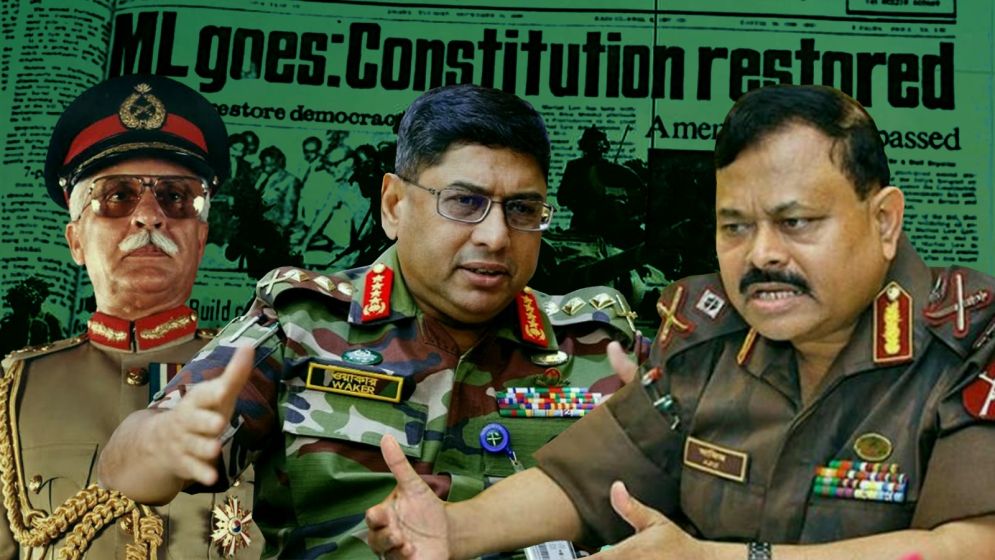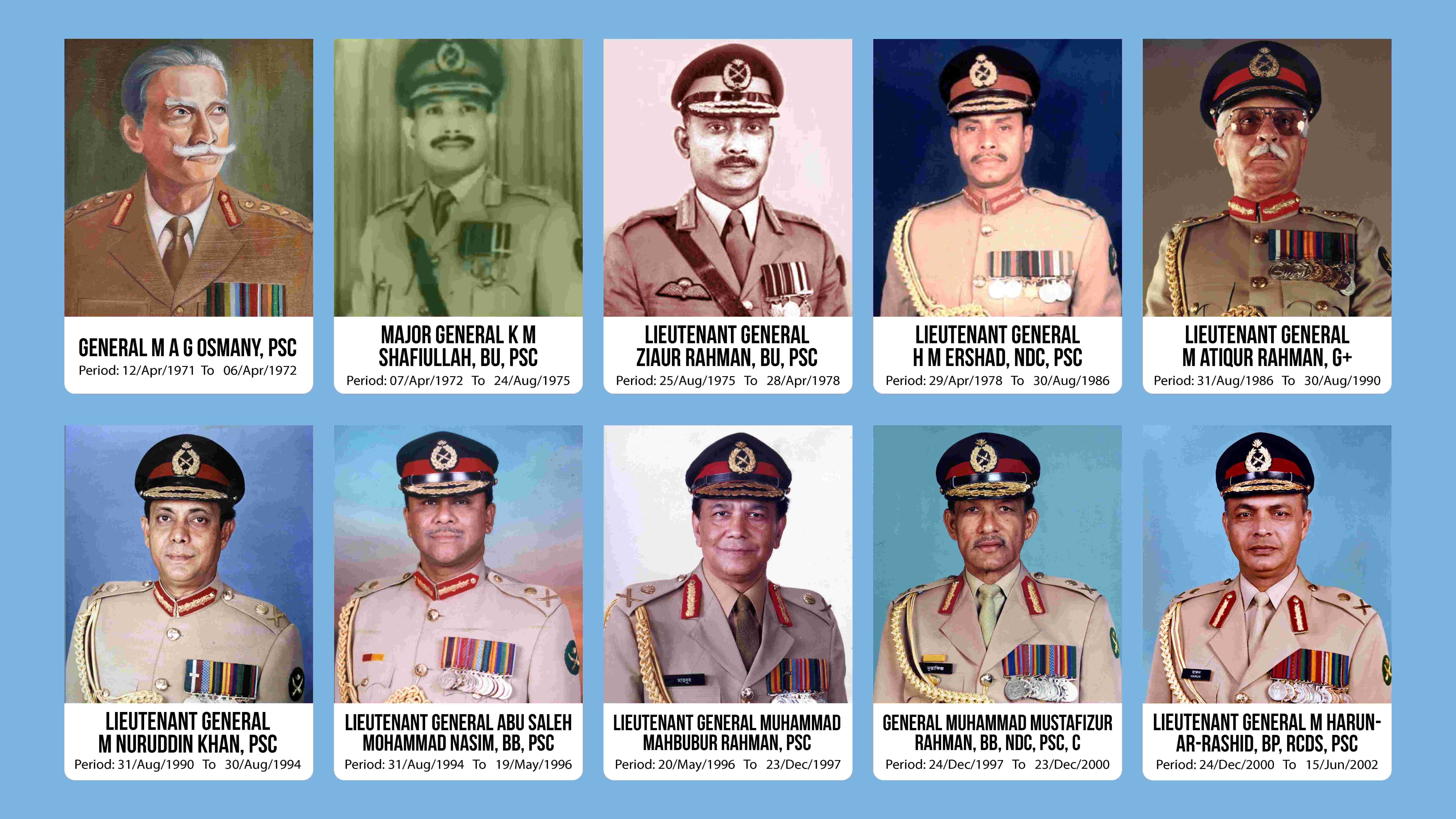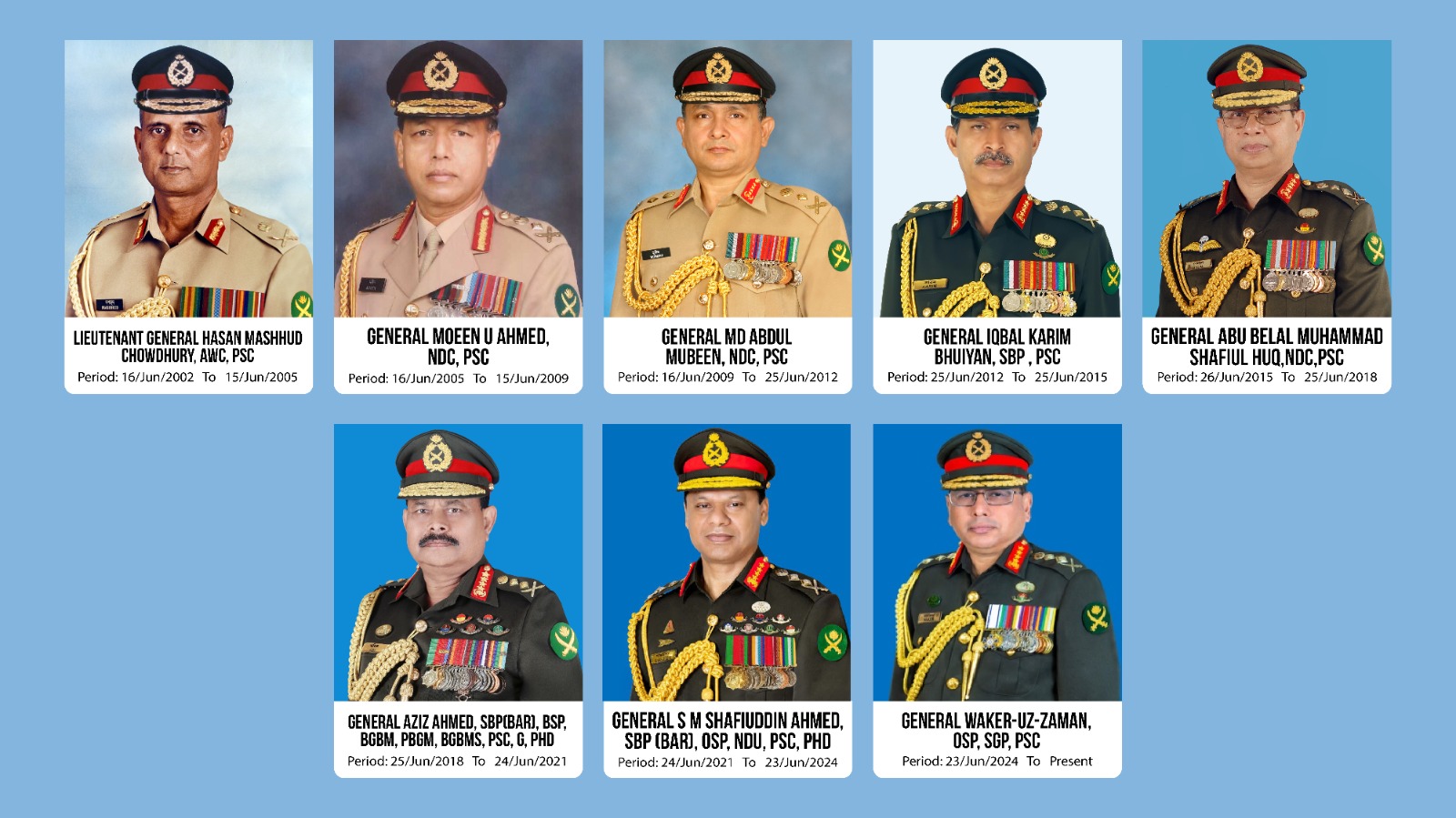Generals and gambits: The high stakes of leadership in Bangladesh

It all began, as many events do, in Plassey.
Nawab Siraj had just received the devastating news that his top general, Mir Madan, had been killed by the British. Suddenly, the unimaginable—an army of 50,000 being defeated by a ragtag force of just 750 British soldiers and their local allies—was becoming a reality.
Overcome with fear and lacking experience, he cast his crown to the ground and pointed to his other general, Mir Jafar. It would now be Mir Jafar's responsibility to protect that crown.
At the time, Bengal was the wealthiest province of the Mughal Empire, the richest nation in the world. One can only imagine how out of place that royal headdress, adorned with diamonds, rubies, and other precious gems, must have looked lying in the mud of Plassey.
Unfortunately for Siraj—and for us—he and his army chief faced a crucial divergence in their paths. Their interests were no longer aligned.
This dilemma has haunted our nation's rulers ever since.
Sheikh Mujibur Rahman appointed the ineffective and indecisive Major General KM Shafiullah as army chief over the more experienced Major General Ziaur Rahman. Mujib was met with cowardice when he sought Shafiullah’s assistance during his most critical moment, only to be advised to flee instead.
Zia succeeded Mujib and briefly held onto the army chief position himself. However, this became untenable when Zia chose to run for president in 1978. He appointed Major General Ershad as army chief, who then betrayed him, orchestrated his assassination, and ultimately seized power.
Ershad faced a dilemma similar to Zia's. He orchestrated a coup in 1982 and took the presidency in 1983. However, he retained the position of army chief until 1986, when he resigned to run in the presidential election.
His first army chief, Lieutenant General Atiqur Rahman, was compliant, but his second, Lieutenant General Nuruddin Khan, refused to support him during violent protests, ultimately leading to Ershad’s downfall.

Bad luck with the army chiefs even
after democratic transition
This marked the beginning of Bangladesh's 15-year experiment with democracy.
Our first democratically elected prime minister in a Westminster-style government, Begum Khaleda Zia, had a particularly unfortunate track record with army chiefs.
After Nuruddin, she appointed Lieutenant General Abu Saleh Mohammad Nasim as army chief, who subsequently led a coup against the first caretaker government she had handed power to.
During her second term from 2001 to 2006, her first choice for army chief, Lieutenant General Hasan Mashhud Chowdhury, became Chairman of the Anti-Corruption Commission (ACC) after the 1/11 military coup, zealously persecuting Zia and her family.
His successor, General Moeen U Ahmed, also staged a coup against the caretaker government Zia had transferred power to, imprisoned her, cracked down violently on her party, and tortured her sons in jail, forcing them into exile, where one tragically died.
Sheikh Mujib transitioned from a democratic leader to a dictator. Zia was a visionary statesman who introduced multi-party parliamentary democracy to Bangladesh. Ershad was a corrupt and brutal dictator. Khaleda Zia is celebrated as a champion of democracy. Yet all four leaders were poorly served by their army chiefs.
This brings us to Sheikh Hasina, the longest-serving leader in Bangladesh’s history and arguably the luckiest. She appointed seven army chiefs, all of whom remained loyal to her.
Her first term, from 1996 to 2001, fell between Khaleda Zia's two terms. Her initial choice was General Mustafizur Rahman, a distant uncle.
The assassination of her father had deeply
affected Hasina, complicating her relationship with the military due to its
involvement in his death. In an effort to manage this institution, she selected Mustafiz who was already on pre-retirement leave.
Gaining confidence, she later chose Lieutenant General M Harun-Ar-Rashid, a more traditional infantry officer.
Starting her second tenure in 2009, following Moeen's failure to solidify his coup and amidst the fallout from the disastrous BDR Mutiny, Hasina appointed a series of army chiefs who either remained compliant or became active collaborators in undermining democracy in Bangladesh.
Her first choice, General Abdul Mubeen, passively accepted her revocation of the caretaker government provision. Next, General Iqbal Karim Bhuiyan oversaw the one-sided elections of 2014, in which 153 of the 300 parliamentary seats were declared won by Hasina before any voting took place.

Three to tango and the one who
betrayed
Following him, General Abu Belal Shafiul Huq presided over the worst period of extrajudicial killings and torture in Bangladesh’s history, as the police and RAB, later sanctioned by the US, operated with impunity.
To prepare for the controversial elections of 2018, she appointed General Aziz Ahmed, the brother of a notorious Awami League criminal whose corruption and nepotism stained the office, and who was also sanctioned by the US. Finally, there was General SM Shafiuddin Ahmed, who oversaw the farcical elections of 2024.
By the time Shafiuddin was set to retire in June 2024, Hasina appeared to be at the peak of her power. She seemed to have achieved the remarkable feat of garnering support from the US, India, and China.
The domestic opposition was fragmented, her daughter held a prestigious position at the WHO in India, and her party was openly promoting their Vision 2041 initiative.
Then she made the momentous decision to appoint General Waker-Uz-Zaman as the next army chief. Waker, being the son-in-law of Mustafiz, her first army chief, was also distantly related to her. He would ultimately be her last army chief.
On the significant day of August 5, as Bangladesh witnessed the most powerful demonstration of popular resistance against an indigenous dictator, Hasina gathered her security team for an urgent meeting.
Present were Waker, the army chief, along with the navy chief, the air force chief, and the chief of police. They informed her that, in light of the ongoing protests, they could no longer guarantee her safety.
To sway Hasina’s decision, they invoked the fear of the growing column of protesters and activists advancing from the outskirts of Dhaka towards her residence.
This group encountered a series of army checkpoints established to prevent such protests, yet each checkpoint allowed them to continue on their path.
Did Hasina contemplate her choice of Waker in the final moments of her rule? Did she recognize the bitter irony of her downfall occurring just ten days before the anniversary of her father’s assassination? Did she grasp the magnitude of her defeat?
We may never know. However, as she hastily fled her residence to reach the waiting helicopter, the crown of Bengal lay abandoned in the mud, its countless diamonds and gems sparkling in her wake.
—-
Ehteshamul Haque is a Virginia based lawyer

